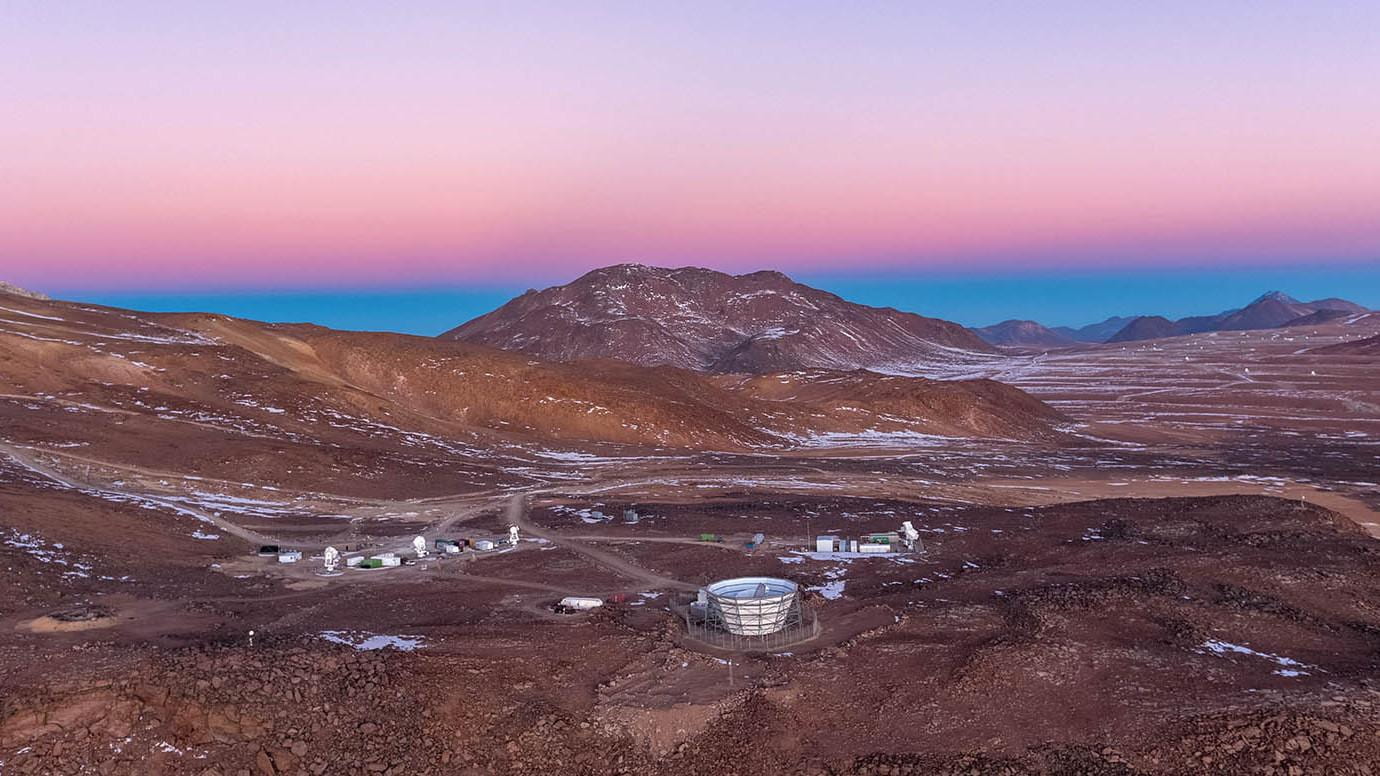The largest collaborative undertaking yet to explore the relic light emitted by the infant universe has taken a step forward with the selection of Lawrence Berkeley National Laboratory to lead the U.S. Department of Energy’s portion of the project.
This next-generation experiment, known as CMB-S4, or Cosmic Microwave Background Stage 4, will unite several existing collaborations to survey the microwave sky in unprecedented detail. The plan calls for 500,000 ultrasensitive detectors on 21 telescopes located in two of our planet’s prime places for viewing deep space: the South Pole and the high Chilean desert. The project, which is estimated to cost several hundred million to build, is intended to unlock many secrets in cosmology, fundamental physics, astrophysics and astronomy.
As with the construction of new cameras for the first South Pole Telescope, which have made breakthrough observations of the skies and early universe, the Department of Energy and National Science Foundation are partnering to build the new telescopes. Last year, the NSF announced it was tapping the University of Chicago to lead the development for the NSF part of the project.
Department of Energy Office of Science Director Chris Fall authorized the selection of Berkeley Lab as the lead laboratory for the DOE roles and responsibilities for the construction of CMB-S4, with Argonne National Laboratory, Fermi National Accelerator Laboratory and SLAC National Accelerator Laboratory serving as partner labs. The CMB-S4 science collaboration now numbers 236 members at 93 institutions in 14 countries and 21 U.S. states.
Formerly established in 2018, the CMB-S4 collaboration has two current co-spokespeople: Julian Borrill, head of the Computational Cosmology Center at Berkeley Lab and a researcher at UC Berkeley’s Space Science Laboratory, and John Carlstrom, the Subramanyan Chandrasekhar Distinguished Service Professor at the University of Chicago and scientist at Argonne.
“Ever since CMB-S4 was conceived, we have been working to pull the collaboration together and build the team, and we are now working toward a final design so we can start construction on a very short timescale,” Carlstrom said. “This has been a terrific project—there’s a lot of enthusiasm. There’s much remaining to learn from the cosmos, and CMB-S4 will take us a significant step further in our understanding of the universe.”
Read more at UChicago News.
Image: Multiple CMB-S4 telescopes will be built at the Atacama Desert site in Chile, where instrumentation already exists, including the Simons Observatory, above. CMB-S4 will also include telescopes at the South Pole. Photo courtesy of UC San Diego

